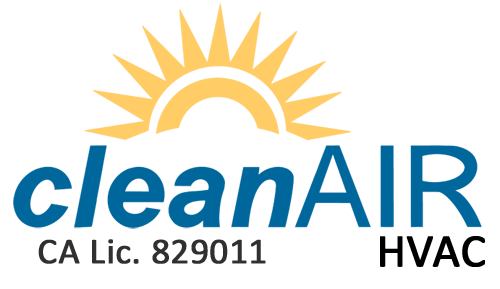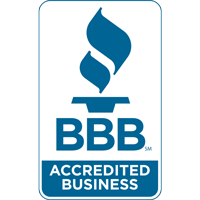
Ceiling fans are one of the most overlooked ways to make your home more comfortable and reduce energy costs. By improving air circulation and supporting your HVAC system, ceiling fans and energy efficiency are truly a match made in heaven. They offer a smart, energy-efficient way to stay cool while easing strain on your AC—even preventing unnecessary air conditioning repair.
In this blog, the experts at Clean Air HVAC break down how ceiling fans can make your home feel more comfortable while increasing your HVAC efficiency. We'll also provide some HVAC efficiency tips that make the most of ceiling fans.
Comfort vs. Temperature: Staying Cool Using the Wind-Chill Effect Indoors
Ceiling fans don’t actually change the room’s temperature—they cool you down by moving air over your skin. This is called the wind-chill effect, and it can make a room feel up to 4 degrees cooler without adjusting the thermostat. That means you feel less hot and enjoy the benefits of indoor air circulation from your ceiling fan while relying less on your air conditioner—helping reduce your electric bill in summer.
The Best of Both: Advantages of Pairing Fans and Air Conditioning Together
There are several advantages to using ceiling fans and air conditioning together, especially when it's very hot outside. By combining both, you increase HVAC efficiency and maintain a comfortable indoor temperature with less strain from your cooling system.
Benefits of using ceiling fans and AC together:
- Ceiling fans help lower HVAC load by moving cool air more evenly throughout the room. Decreasing HVAC stress is important, because it can save you from a breakdown that may result in premature AC or furnace installation.
- Using ceiling fans improves your indoor comfort by getting rid of warm pockets and increasing airflow.
- Pairing ceiling fans and AC can lower your utility usage. If you have a home automation system, you can even fine-tune your smart thermostat settings to set the temperature higher while your ceiling fan is running.
Clockwise vs. Counterclockwise Ceiling Fan Rotation: What Direction to Spin in Summer and Winter?
To make full use of your ceiling fans year-round, it’s important to ensure blades are rotating in the right direction for the season. The direction influences how air flows, which can either or gently recirculate warm air so you feel warmer.
When to spin ceiling fans counterclockwise
In the summer, ceiling fans should rotate counterclockwise at a faster setting. This creates a breeze that pushes cool air downward, amplifying the wind-chill effect and creating a cooler sensation.
When to rotate ceiling fans clockwise
On cold days, set your fan to spin clockwise on a low speed. This gently pulls cool air upward and draws warm air downward from the ceiling, making the space feel cozier without adjusting your thermostat.
What Type of Ceiling Fan Is Best
Picking the right ceiling fan depends on a few critical considerations, including blade design, airflow rating and room dimensions. First, look for fans that have a good balance of ECFM airflow and blade pitch to ensure efficient air circulation in your home:
- ECFM is how much air a fan circulates—the cubic feet per minute, or CFM—per watt of electricity consumed. Fans with greater ECFM are the most energy efficient.
- Blade pitch is the tilt of the blades. A sharper blade pitch moves more air than a shallower pitch but can also strain the motor.
Also, consider room size when sizing a ceiling fan—a fan that’s too small won’t move as much air as you'd like, while one that’s too big may be too strong for the space.
Boost Your HVAC Efficiency With the Team from Clean Air HVAC
At Clean Air HVAC, our HVAC experts can help you stay comfortable while minimizing wear on your heating and cooling systems. From energy-saving ceiling fan tips and air conditioning installation to smart thermostats and furnace repair, we offer comprehensive solutions that match your needs. Set up your appointment by calling 925-267-6219 today.


